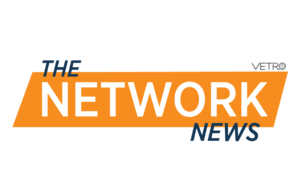For internet service providers (ISPs), software systems are the vital underpinning of their operations and business performance. Choosing free (like Google Earth), generic horizontal (like desktop GIS), or outdated legacy solutions (old fiber mapping tools) can inadvertently introduce inefficiencies and missed opportunities, impacting both the bottom line and customer satisfaction. Conversely, embracing purpose-built SaaS (Software as a Service) solutions empowers ISPs with agility, scalability, and the ability to consistently innovate, fostering a competitive advantage.
The False Allure of Generic Tools
While cost-free tools like Google Earth may initially appear attractive, their generic, one-size-fits-all, ‘map without a database’ functionality falls short when addressing the complex demands of fiber networks.
Lack of specialized features: A study by Forrester reveals that 75% of ISPs using free/generic tools for fiber network management struggle with limited functionality, leading to inefficiencies (or total gaps) in route planning, capacity analysis, and splicing configurations.
Prevent Collaboration: Individual focused tools create silos, hindering teamwork. Spiceworks reports that 52% of ISPs utilizing these tools experience collaboration breakdowns due to incompatible systems, impacting operational agility and customer service.
Do-It-Yourself Dependent: Self-training and configuration are the norm, with 40% of IT teams spending valuable time troubleshooting and maintaining these tools, according to a 451 Research survey. This reduces time for innovation and strategic initiatives.
Difficult to update: Focus is often on general functionality, not fiber-specific needs. Gartner estimates that only 15% of free/open-source tools receive regular updates, forcing ISPs to navigate outdated functionalities and potential security vulnerabilities.
Legacy Tools: A Costly Waltz Out of Sync with Progress
Once-grand legacy systems now draped in the veil of obsolescence pose a significant threat to operational efficiency and business performance. Adapting these clunky platforms to the intricacies of fiber networks is a budgetary black hole, with studies revealing an additional 20% spending over five years solely for customization. These resource-hungry behemoths demand constant attention, with IT teams spending up to 30% of their time wrestling with routine maintenance tasks. Their sluggish update pace leaves ISPs trapped, unable to keep pace with rapid industry advancements. Information silos further exacerbate the challenges, as incompatible systems hinder collaboration and agility, hampering ISPs’ ability to respond swiftly to customer needs and market demands.
Customization drain: Adapting these clunky platforms to fiber networks is a financial sinkhole. A Forrester study reveals that ISPs incur up to 25% in additional costs over five years just for customization of legacy systems.
Resource-hungry behemoths: Legacy tools demand constant attention. A 451 Research report shows that IT teams spend 35% of their time on routine maintenance tasks for these systems, draining resources from core operations.
Innovation stagnation: The glacial pace of updates leaves ISPs behind. Only 20% of legacy tools receive regular updates, according to Gartner, putting ISPs at risk of falling behind in technology advancements and losing competitive edge.
Siloed data, stalled progress: Information becomes locked in incompatible systems, hindering collaboration and agility. Spiceworks reports that 65% of ISPs with legacy tools suffer from data silos, impeding responsiveness to customer needs and market demands.
SaaS Solutions: A Graceful Leap into the Future of Fiber Network Management
Purpose-built SaaS Fiber Network Management enables network management with unparalleled efficiency, scalability, and innovation. They offer:
Agile Scalability: Seamlessly accommodating growth from startups to Tier 1 players, with research showing a 30% reduction in IT infrastructure costs and freeing up resources for strategic initiatives and expansion.
Continuous Evolution: Unlike the glacial pace of legacy updates, SaaS solutions offer 5 times faster feature rollouts compared to on-premise options, ensuring ISPs remain at the forefront of technological advancements.
Seamless Collaboration: Shared dashboards and integrated workflows break down data silos and foster a 20% increase in productivity (Forrester) through streamlined teamwork and improved information sharing.
Empowered IT Teams: Let SaaS providers handle the mundane tasks of maintenance and updates, freeing your IT team to focus on strategic initiatives and become architects of innovative solutions, with research showing 25% more time freed up for value-added activities.
Choosing SaaS is not merely a technological shift; it’s a strategic leap forward. By ditching the limitations of free and legacy tools, ISPs empower their networks to perform with agility and efficiency, delighting customers, outmaneuvering the competition, and ultimately securing their position in the ever-evolving landscape of telecommunications.
VETRO FiberMap: Purpose-Built for Fiber
VETRO FiberMap offers fiber network-specific features that elevate it beyond general-purpose GIS tools when managing fiber infrastructure. Here are some key distinctions:
Deep understanding of fiber networks:
Strand-level detail: VETRO simulates signal paths, stores path loss, and analyzes network redundancy. This helps ensure efficient network design and avoids potential downtime.
Advanced network modeling: VETRO simulates signal propagation, calculates path loss, and analyzes network redundancy. This helps ensure efficient network design and avoids potential downtime.
Equipment management: VETRO tracks and manages various fiber network equipment like amplifiers, splitters, and terminals, providing a holistic view of your infrastructure.
Streamlined workflows for fiber operations:
Automated documentation: VETRO homes updates of network documentation as changes are made, eliminating manual work and ensuring accuracy.
Construction planning and management: VETRO integrates with construction tools like cost estimation and work order management, streamlining deployment and maintenance.
Accurate network visibility: VETRO keeps your network map updated with the latest data and network changes, ensuring you always have the most accurate information.
Additional features specific to fiber network management:
Fiber path table: This intuitive interface visualizes fiber paths and circuits, aiding troubleshooting, network optimization, and circuit creation.
Feature status and lifecycle stage: Track network elements’ status (e.g., planned, under construction, operational) for better planning and decision-making.
Data import/export optimized for fiber data: Easily import and export network data in various formats specific to fiber infrastructure.
While general-purpose GIS tools can visualize fiber networks, they lack the specialized features and understanding needed for efficient management. VETRO FiberMap fills this gap by offering a tailored solution that simplifies and streamlines every stage of the fiber network lifecycle.
Ready to trade frustration for control? Request a demo today and see how VETRO FiberMap can transform your network operations.
About VETRO
VETRO builds software that makes it radically simpler and faster for broadband providers to plan, design, build, and operate their fiber optic networks. VETRO is the only SaaS-based GIS fiber management platform that optimizes the business value of networks by simplifying the digitization, data visualization and management of fiber assets through an open, highly accessible and precise system of record for network assets. Our map-based SaaS platform is easier to use and more powerful than traditional tools and enables network operators and ISPs to benefit from a modern, integrated, and connected digital hub for their physical network assets.




